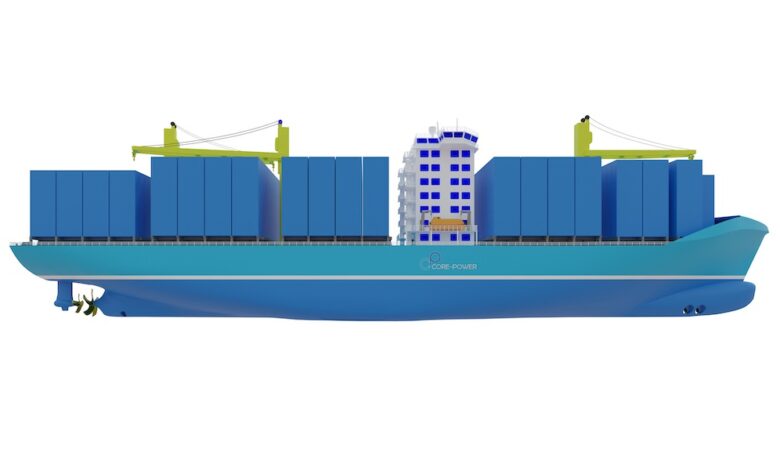Liner bosses discuss potential for nuclear

The heads of two of the world’s largest containerlines have discussed how they see the role of nuclear power in the years ahead.
Speaking yesterday at a press conference hosted by the World Shipping Council, a liner lobby group, Jeremy Nixon and Rolf Habben Jensen, the CEOs of Ocean Network Express (ONE) and Hapag-Lloyd, respectively, discussed a range of environmental issues while also unveiling a new green fuel pricing mechanism proposal that has been submitted to the International Maritime Organization (IMO).
If we can decarbonise shipping, we can decarbonise the world
While the focus of the discussion yesterday focused on how best to bridge the price gap between conventional and greener fuels, when quizzed by Splash, the two liner bosses were happy to give their take on one of the outliers in the future fuels debate.
“We should not rule anything out,” Habben Jensen said of nuclear propulsion, telling reporters it was still “early days” for the technology. “Any role would be from the second half of next decade,” the Hapag-Lloyd boss suggested.
Habben Jensen’s counterpart at ONE, Nixon, said he reckoned that green hydrogen would ultimately work out as shipping’s key fuel. For its creation, vast amounts of electricity would be required, something that nuclear power could help achieve, he said.
Mikal Bøe, arguably the world’s most high profile proponent of nuclear as shipping’s green bullet, in his role as CEO of CORE POWER, told Splash this morning: “There is simply no net zero without nuclear. A 2035-built, nuclear-powered containership will be faster, carrying more cargo, travelling millions of miles on the same fuel load, all without emissions of any kind.”
He went on to add: “In port she could provide clean, cheap electricity to power loading and discharging gear onshore, helping to decarbonise her ports of call. Her sister ships will only get better.”
CORE POWER, a UK-based marine atomic propulsion developer, last year unveiled a concept design (pictured) for a nuclear-powered, 2,800 teu boxship using molten salt reactors.
Among CORE POWER’s more than 60 shipping-related investors is X-Press Feeders, one of the world’s largest feeder operators.
Reacting to Nixon’s comments on green hydrogen, Bøe said: “If shipping really wants green hydrogen as a feedstock for synthetic fuels, the only reliable and zero-emission way to produce it is with nuclear energy.”
Floating new nuclear energy can power the production of the green fuels at either ends of green corridors and offshore major port areas, Bøe argued.
Nixon and Habben Jensen were speaking yesterday at the unveiling of the WSC’s Green Balance Mechanism (GBM), a proposal, submitted to IMO ahead of next month’s gathering of the Marine Environment Protection Committee (MEPC), designed to address the industry’s challenge to bridge the price gap between the cleanest fuels and fossil fuels.
Through the GBM fees are taken from fossil fuels and allocated to green fuels used, so that the average cost of fuel is equal.
Habben Jensen warned that current supplies of greener fuels fall “far short” of what the shipping industry requires.
John Butler, the president of the WSC, said green fuel suppliers needed to be sent a strong signal, and that the proposed new mechanism could work as a “rifle shot” to bridge the price gap among alternative fuels.
“If we can decarbonise shipping, we can decarbonise the world,” ONE’s Nixon said, warning end customers that shipping as a whole will become more expensive with the transition to green fuels.
